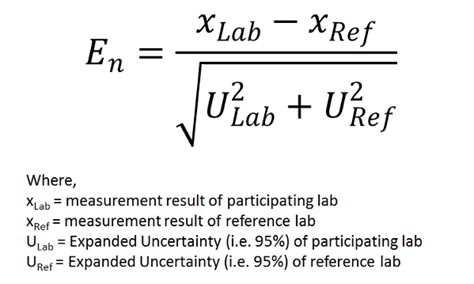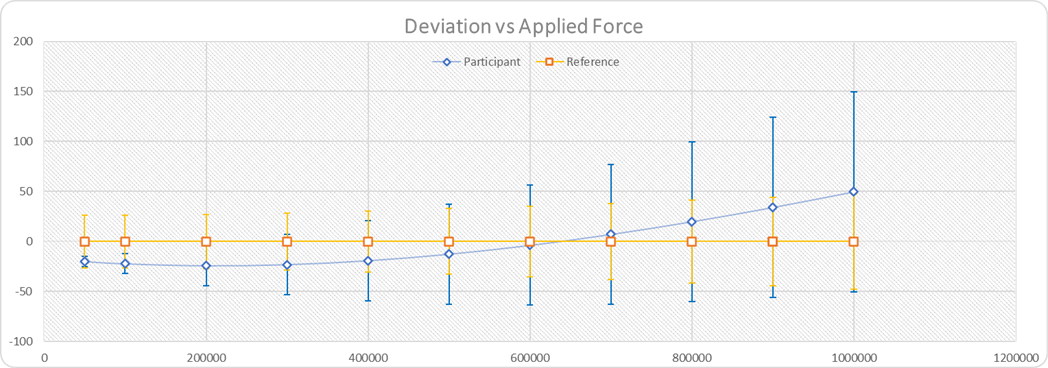The Role of the En Ratio in Force Calibration Confidence
In the world of calibration, proving that your measurements are both accurate and defensible goes beyond simply watching control charts. While control charts are powerful for spotting drift or unusual trends, they don’t answer a critical question: are our stated measurement capabilities truly valid?
To demonstrate this, laboratories need to look outward. External benchmarks such as Proficiency Tests (PTs) or Inter-Laboratory Comparisons (ILCs) provide that reality check by comparing your results against a trusted reference. Among the tools used to make these comparisons meaningful, the En ratio stands out.
The En ratio doesn’t just compare two numbers—it accounts for the uncertainties behind those numbers. By considering both your laboratory’s claimed uncertainty and the reference laboratory’s uncertainty, the En ratio offers a clear, objective measure of agreement. In short, it bridges the gap between internal quality control and external validation, making it indispensable for demonstrating compliance and building confidence in calibration results.

Interpretation:
- |En| ≤ 1 → The result agrees with the reference, within stated uncertainties.
- |En| > 1 → A significant difference exists, suggesting underestimated uncertainty or bias.
One useful tool is to calculate the En ratio as stated above.

Figure 1: En Ratio Graphical Plot.
Application at Morehouse
At Morehouse, En ratio calculations are used whenever possible to compare the performance of in-house reference standards against NIST-calibrated standards. In this case, the comparison is carried out on the Automated Universal Calibrating Machine (AUCM). Two load cell standards, both calibrated directly by NIST, are compared under controlled conditions.
For this evaluation:
- Reference (NIST):
- Expanded measurement uncertainty = 0.001 % of applied force.
- The ASTM Lower Limit Factor (LLF) is included as a statistical estimate of expected device errors. This LLF serves as an “expected performance” benchmark for the load cell when used under similar conditions.
- Morehouse Laboratory Standard:
- Claimed expanded uncertainty = 0.01 % of applied force.
- Force range covered: 50,000 lbf through 1,000,000 lbf.
By substituting these values into the En formula, the ratio quantifies whether the Morehouse claimed capability (CMC) aligns with the NIST reference. In practice, an En ≤ 1 validates that the laboratory’s CMC statement is supported by objective inter-comparison data.

Figure 2: Data Series Showing the Error Bars at Each Force Point.
Data Series
- Participant (blue diamonds, with error bars):
- Shows the measured deviations of the participant’s device from the nominal force at various applied forces.
- Error bars indicate the participant’s measurement uncertainty at each test point.
- The deviation starts slightly negative (–20 to –40), trends toward zero around mid-range (~500,000–600,000 lbf), and then increases positively up to +50 by 1,000,000 lbf.
- Uncertainty grows as the applied force increases (larger error bars at higher loads).
- Reference (orange squares, with error bars):
- Represents the reference lab (likely NIST) results, with the ASTM llf, and Resolution of the UUT included.
- Deviations are consistently near zero across the entire force range.
- Error bars are smaller and relatively stable compared to the participant’s, reflecting the tighter uncertainty of the reference, which makes sense as NIST is using primary standards known to better than 0.001 % from 50,000 lbf to 1,000,000 lbf.
Interpretation
- The Participant’s measurements are consistently close to the reference but show a bias: slightly negative at lower forces, crossing through zero mid-range, and slightly positive at higher forces.
- The Reference is treated as the “true” value (deviation ~0).
- The overlap of the error bars indicates that, despite the bias trend, the participant’s results are statistically consistent with the reference—the differences are within the combined uncertainty.
Why the En Ratio Matters
- Verification of CMC Claims
- Laboratories accredited to ISO/IEC 17025 are required to demonstrate the validity of their stated measurement uncertainties. En ratio outcomes provide evidence of compliance and technical competence.
- Complement to Control Charts
- Control charts monitor ongoing stability and drift within the lab’s processes.
- En ratios demonstrate external comparability to national standards, addressing traceability and uncertainty claims.
- Risk Reduction in Decision Rules
- When applied together with decision rule frameworks (e.g., guardbanding or shared risk methods), En ratios reduce the risk of false acceptance (PFA) and false rejection (PFR).
Morehouse has a CMC capability worksheet that also includes an En worksheet to calculate En ratios and the plots shown above.
In summary:
The En ratio is an indispensable complement to control charts. While control charts provide continuous assurance of measurement stability, En ratio analysis demonstrates that a laboratory’s uncertainties are realistic and defensible when benchmarked against NIST or other NMIs. At Morehouse, these evaluations reinforce both measurement confidence and compliance with ISO/IEC 17025 requirements, strengthening the credibility of the laboratory’s force calibration services.
Morehouse ILC Force Calibration Rental Kit
The Morehouse ILC Force Calibration Rental Kit is designed to help laboratories satisfy ISO/IEC 17025:2017 interlaboratory comparison requirements by providing a comprehensive solution for force calibration, including a load cell, adapters, indicator, and calibration certificate. This kit enables labs to validate their calibration and measurement capability (CMC) claims with very low overall uncertainty, supporting confidence in measurement results and compliance with recognized standards. With robust performance and an easy-to-use analysis worksheet, the kit offers an objective way to benchmark results and improve measurement processes. More information here.
More Information about Morehouse
We believe in changing how people think about Force and Torque calibration in everything we do, including discussions on force calibration procedures.
This includes setting expectations and challenging the "just calibrate it" mentality by educating our customers on what matters and what may cause significant errors.
We focus on reducing these errors and making our products simple and user-friendly.
This means your instruments will pass calibration more often and produce more precise measurements, giving you the confidence to focus on your business.
Companies around the globe rely on Morehouse for accuracy and speed.
Our measurement uncertainties are 10-50 times lower than the competition, providing you with more accuracy and precision in force measurement.
We are a calibration provider that can turn around your equipment in 7-10 business days so you can return to work quickly and save money.
When you choose Morehouse, you're not just paying for a calibration service or a load cell.
You're investing in peace of mind, knowing your equipment is calibrated accurately and on time.
Through Great People, Great Leaders, and Great Equipment, we empower organizations to make Better Measurements that enhance quality, reduce risk, and drive innovation.
With over a century of experience, we're committed to raising industry standards, fostering collaboration, and delivering exceptional calibration solutions that build a safer, more accurate future.
Contact Morehouse at info@mhforce.com to learn more about our calibration services and load cell products.
Email us if you ever want to chat or have questions about a blog.
We love talking about this stuff. We have many more topics other than expressing SI units!
Our YouTube channel has videos on various force and torque calibration topics here.


